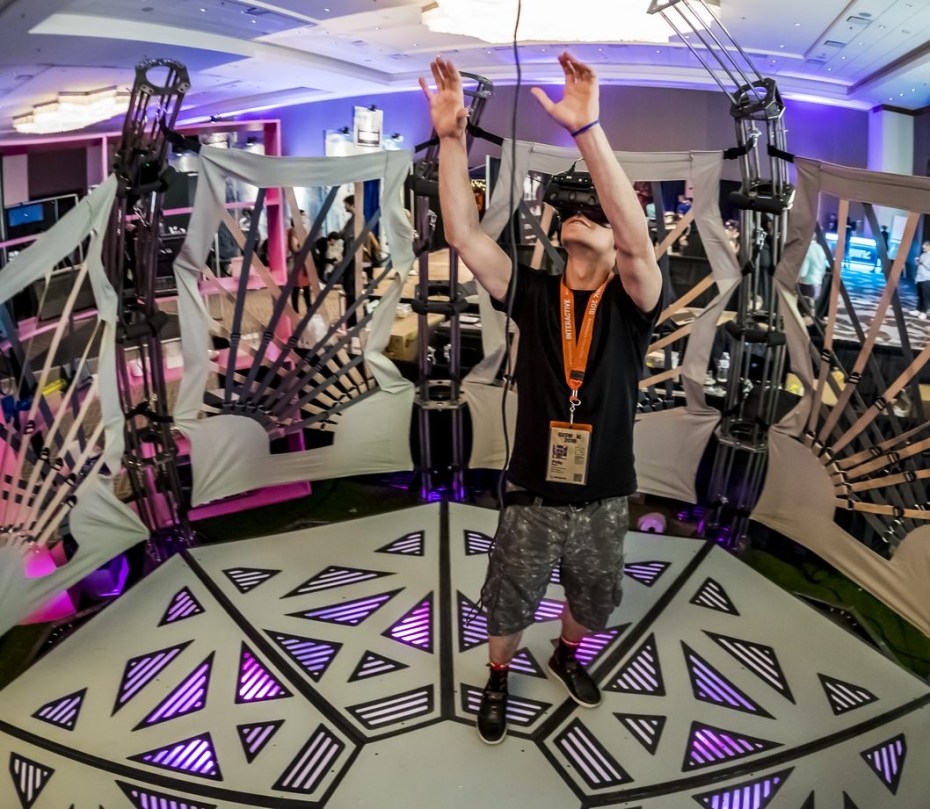Microsoft researchers Daniel McDuff and Christopher C. Berger's conference session, titled "Augmented Minds - VR That Pushes Perceptual Limits," was one of those that warranted an encore due to audience interest. McDuff and Berger showed their audience how illusions created in VR can alter the user's physical perception, and how the use of haptic technologies can extend the sensation of touch outside the body.
"We proposed the panel because we wanted to expose people to new concepts from scientific research they might not have been familiar with and show how they could be applied in VR," says McDuff. "Neither Chris nor I are primarily VR/AR researchers, but we use these technologies as a tool to help in scientific research."
The audience participated in demos of two applications: With Touch in VR, users wear a headset and hold controllers that can create the sensation of touch between them, while CardioLens allows users to see a person's heart rate just by looking at them, showing a heart rate and pulse graph overlay on the subject's face. The potential applications of that kind of feedback could extend a VR experience from a visual and spatial point of view to a very literal biological one, in which it's possible to feel another person's heartbeat, as well as the increase or decrease different emotional states induce.
As long as the cost and processing requirements of VR mean that it is still relatively tethered to its infrastructure, it will continue to gain ground incrementally until its as-yet-undetermined big technological leap pushes it forward. "Once wearable AR tech — or MR tech, really — catches up and becomes more readily available to the public at affordable pricing, it will be the next tech to go wide and change the way we interact with the world," says SXSW VR programmer Blake Kammerdiener. "It's true future tech but the timeline to mass adoption is less clear. It will change everything, like the smartphone in the early '00s did."
If that mass adoption tracks with de la Peña's efforts to induce empathy, perhaps her hopes will be granted. "We're also living in this very dark, intense time in the way that we treat each other," she told her audience. "I don't believe we're meant to be this way. I think kindness can prevail."
Nonny de la Peña was the Convergence Keynote Speaker at SXSW 2018. Watch below:




